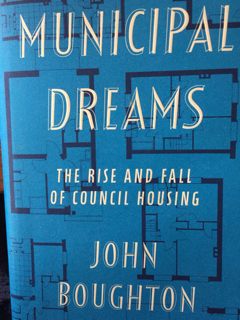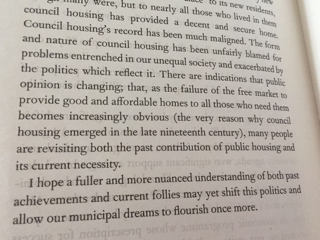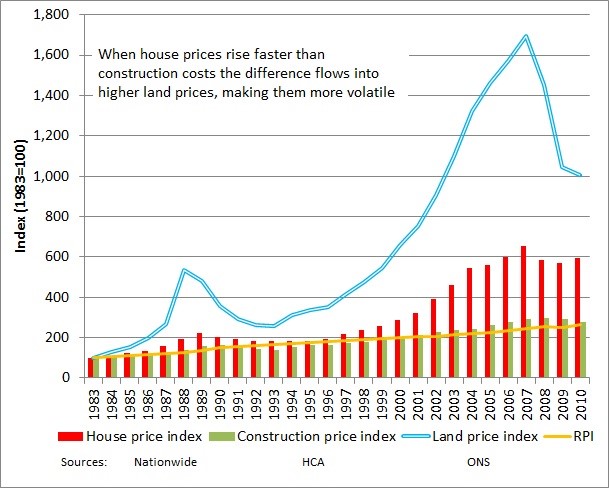Yesterday, 19 January 2018, Karen Buck MP sought a second reading of her private member’s Bill, the Homes (Fitness for Human Habitation and Liability for Housing Standards) Bill.
After a long an interesting debate, with support from all sides of the House, the Bill was given an unopposed second reading and now has a good chance of becoming law. Below is Karen’s speech, slightly reduced to take out interventions from other MPs.
It explains the background to the Bill and its purpose and will be of interest to most people involved with housing. The speech is taken from the ‘They Work For You’ website, where the whole debate can be found.

Karen Buck MP in the House of Commons at 12:00 am on 19th January 2018.
I beg to move, That the Bill be now read a Second time.
Everyone deserves to live in a safe, warm and comfortable home, yet despite the undeniable progress made over many decades, millions of people—often the most vulnerable—still do not. Currently and extraordinarily, landlords have no obligation to their tenants to put or to keep the property in a condition fit for habitation. There is an obligation on the landlord to repair the structure of the property and to keep in repair features such as heating, gas, water and electricity, but that applies only when something is broken or damaged; it does not cover issues such as fire safety, inadequate heating or poor ventilation causing condensation and mould growth. There is a whole range of fitness issues that seriously affect the wellbeing and safety of tenants and about which tenants can do nothing.
We must await the results of the inquiry into the horror of Grenfell Tower before reaching any conclusions, but we know that residents were raising fire safety concerns in respect of the cladding long before the fire. This cladding was, as far as we know, in good repair but may have been unfit and hazardous—something certainly was—yet the residents had no legal route available to them to pursue their concerns.
The Bill will modernise the housing fitness standard, and it will extend to cover almost all tenancies—private, housing association and council. It will allow tenants to take action on their own behalf in the same way and on the basis of the same standards as local authorities currently can and give them a remedy that so many of them lack.
Members of Parliament are all too familiar with bad housing. Most of us, at one time or another, have found ourselves responding to constituents living in the most appalling conditions that their landlords, public or private, cannot or will not act to resolve. As an inner London MP whose constituency includes areas that have been notorious for poor housing, dating back to the era of slum landlords such as Rachman and Hoogstraten, this issue has always been very dear to my heart.
When such cases come to me—I will mention them in moment—my first port of call is often the environmental health department. While my council is of a different political complexion from me and we fight like ferrets in a sack on most issues, I can truthfully say that environmental health rises to the occasion again and again. I must have referred more than 1,000 cases to it over the years, and it has acted with vigour and professionalism, yet we know that that action is not sufficient.
I have seen a couple with small children living in two rooms of what was in effect the attic of a property in north Paddington. They lived and slept in one room; in the other, the tiny kitchen, toilet and shower were just cubicles built into the same space. I have seen a family who have had to close off two bedrooms—their only bedrooms—because of the cold and damp, and who all slept in the living room because they were unable to use the entire property. I have met a young mum who had to bring home her baby, who was born prematurely, to a flat that was so damp that even I, when I visited her, struggled to breathe. Only two weeks ago, I met a pensioner who was taken into hospital with hyperthermia twice because of the cold in a flat from which the heat leaks through badly designed windows. Incidentally, she also fell and hurt her hip on steps that had been turned into a virtual river as water poured through a hole in the roof.
A good example of how fitness and disrepair are distinct and different elements of unfitness comes from an estate—a lovely and popular estate—in Bayswater in my constituency. Residents had long-standing complaints about extreme cold, damp and condensation, to the point that environmental health set up a dedicated project with the goal of protecting the health of residents. In 2011, its report found a range of deficiencies in the flats contributing to the health hazard of excess cold:
“Frequently associated with cold conditions within the flats was another hazard, that of ‘Damp & Mould Growth’ caused by condensation moisture forming on cold internal surfaces within the flats, including the window frames and the glazing. In some cases, the mould growth was chronic and severe”.
Despite environmental health’s survey of their flats, residents repeatedly requested that something be done; they had asked for the windows to be replaced as long ago as 2006. Why were those flats unfit, and how does that distinguish itself from disrepair?
As those flats were built in the 1950s, when building construction standards were poorer than today, their insulation standards were—and remain—very poor. The end walls of the flats are made of solid reinforced concrete, as are the floors, roofs, external stairways, lift shafts, walkways, balconies and possibly some of the internal walls. The cavity walling was unfilled and uninsulated. Consequently, there is constant heat loss throughout the structure of the building and instances of cold bridging in the flats on the estate caused by cold, uninsulated elements transforming heat energy and losing it externally. That causes condensation, dampness and mould growth. Those residents have been waiting for 12 years. A major estate programme has been under way for some years and still has to run until 2022, and the residents have no legal redress to deal with their concerns.
In case references to heat loss and cold bridging are a little technical, here is one example—one of many—from a resident who wrote to me from that estate:
“I have been suffering from the cold. We are always sick with flu and cold. I have my heating on 24 hours a day, with another electric heater and I am always ill, so is my son. My heating bill for this month alone was £400. My son and I have asthma. I have asthma, arthritis, fibromyalgia, diabetes, Kienbock’s disease in my hands, and I suffer panic attacks and anxiety. I am suicidal and had to go to St Mary’s hospital and see a psychiatrist, who said I must move to improve my health conditions. Please, please help.”
There is plenty of evidence to confirm that bad housing is a drain on the national health service and—as in so many other areas—if we were able to act more effectively to tackle the causes of bad housing, that would also benefit the NHS.
This week, I was pleased to take part in Parliament’s digital engagement process, and our project on housing standards received the best response so far in that important experiment. That is pleasing, although it further served to confirm the extent of the problem. We were told that 57,000 people viewed the Facebook page on which we presented our questions about attitudes to housing fitness, and some of the case studies that came in as a response were truly horrifying. Those studies came from all over the country and reflected the scale of the problem.
We know anecdotally, and from Members of Parliament, councillors and other caseworkers, just how serious is the problem of substandard and unfit housing. The English housing survey shows that three quarters of a million private rented properties—about one in six of that sector—are unfit and that about a quarter of a million social rented homes contain a category one hazard under the housing, health and safety rating system. That could relate to damp, infestation, excess cold and a number of other risks, and it means that 3 million people, including many children, have their health and safety compromised every day by substandard housing.
Local council-led enforcement is simply insufficient for the task. I have already mentioned my very positive relationship with my local authority, although it still has constraints, particularly in respect of its own housing stock. Taken across the board, however, local authorities are not enforcing more than a tiny proportion of measures to deal with substandard properties. My most recent freedom of information research, which was prepared into a report by Stephen Battersby, indicates that enforcement action is taken at a level equivalent to only 1% of all the properties that are unfit according to the English housing survey. Research carried out by Shelter about a year ago found that enforcement action has fallen by 40% in recent years. Importantly, this is not a criticism of local authorities, but the fact is that the capacity simply is not there. Performance varies hugely between councils. There is a reliance on informal action in some areas, and although that has its place and can help to resolve some problems, it makes it hard to assess the overall effectiveness of what local authorities are doing.
One concern that underpins my motivation for the Bill is that it is often the poorest and most vulnerable people—those with the highest likelihood of having disabilities and sickness—who are trapped in the worst housing, and in my experience, very few people have adequate insurance. That is a much larger problem that we must seek to resolve. A number of different remedies may be available to some people, but the minority of people who are concentrated in very bad housing often do not have access to the remedies that are available to those who are better off.
There are a number of issues in respect of supporting tenants that are outwith the scope of the Bill and on which I will continue to make representations, including retaliatory eviction. The reality is that local authorities are increasingly cash-strapped. That is one of the reasons that environmental health departments are not able to enforce. In an ideal world, local authorities would be able to fund advice services and tenancy liaison officers. I have seen some very good practice by tenancy liaison workers, including in Westminster, across the parties—when work is good, I am happy to acknowledge that. I am in absolute agreement with the right hon. Gentleman, however, that it is inadequate and patchy, which is exactly why we need to make sure that individual tenants can exercise a direct remedy in law when the other services we would all like to be in place are not up to the job.
Social council tenants do not have the same right as private and housing association tenants, who can go to the local authority, which may or may not enforce. Council tenants cannot that, and the Bill will extend to them the right to seek remedy.
As we know, the law in this area is generally outdated and restrictive. I started by saying that there is currently no obligation to ensure that the property is fit, as opposed to the obligation to deal with disrepair, and that there are therefore a range of fitness issues about which tenants can do nothing at all. That used not to be the case. The fitness obligation was set in law, but that has ceased to have effect as the law has developed over many decades.
The concept of housing fitness—of homes being fit for human habitation—stems all the way back to the Victorian era and the work leading up to the Housing of the Working Classes Act 1885. Lord Salisbury, the then Conservative Leader of the Opposition, made the case that the shocking condition of housing was injurious to both health and morals and was promptly attacked, even by The Guardian, for propagating state socialism.
The royal commission established prior to the passage of the 1885 Act proposed that there should be a simple power by civil procedure for the recovery of damages against owners or holders of property by those who have suffered injury or loss by their neglect or default in sanitary matters. That is exactly what happened. The remedy was granted to tenants, subject to what was then a relatively generous rent limit, but as time passed and laws changed, overlapped and melded together, the rent limits ceased to be updated and the ability of tenants to seek a remedy when their homes were unfit lapsed.
Eventually, the impact of that led to a 1996 report by the Law Commission, “Landlord and Tenant: Responsibility for State and Condition of Property”. The commission criticised the fact that the right of civil remedy for tenants against their landlords in cases of unfitness had been allowed to “wither on the vine”, as the rent limits had remained unchanged for 40 years. It concluded that removing the rent limits would be the preferred way to give tenants a civil remedy. Two Court of Appeal judgments supported the same conclusion.
More broadly, “Closing the Gaps”, a joint report commissioned by Shelter from the Universities of Bristol and Kent last year, concluded:
“The law relating to health and safety in people’s homes is piecemeal, out-dated, complex, dependent upon tenure, and patchily enforced. It makes obscure distinctions, which have little relationship with everyday experiences of poor conditions.”
Apart from that, I am sure it is fine.
What will the Bill actually do? The old obligations on landlords to ensure that a property is fit and not just in a state of repair have become obsolete. The Bill will therefore have the effect of reviving the fitness requirements and updating them by reference to a definition of hazards, the presence of which will determine whether a property is unfit. That list of 29 categories of hazard is set out in the housing health and safety rating system introduced in the Housing Act 2004. It will have the effect of ensuring that unfitness is covered as well as disrepair, so structural and design faults are included where they risk causing serious harm. That includes cases where poor ventilation causes severe damp or infestation, fire safety, dangerously steep stairs without protection from falls and so on. The tenant could take action against the landlord to make them put right any problems or hazards that make the property unfit and seek compensation when the landlord has not done so. The Bill makes it clear that the landlord would not be liable for any issues arising from the behaviour of the tenant or, where acting, would bring them into conflict with other legal duties.
May I acknowledge those people who have got us to this stage and who support the Bill? There has been broad support for the proposals, for which I am very grateful. Shelter has campaigned strongly, as has Generation Rent. The Chartered Institute of Environmental Health has leant considerable expertise. The National Housing Federation has given its backing, and excellent briefings have come from Citizens Advice, Mind, the Law Society and, of course, the Library, among others.
Very importantly, the Bill is backed by the Residential Landlords Association, the National Landlords Association and the Association of Residential Letting Agents. Alan Ward, the chair of the Residential Landlords Association, possibly summed up the situation for all three organisations when he recently wrote that
“the Bill seeks to achieve what all good landlords want; better enforcement against the crooks that bring the sector into disrepute.”
Sam Lister from the Chartered Institute of Housing researched the history of attempts to improve housing fitness, dating back to Lord Salisbury, and he should get the research published because it is fascinating. Stephen Battersby, the former president of the Institution of Environmental Health Officers, has diligently prepared reports on enforcement and housing fitness over several years, and has provided invaluable advice. I also thank colleagues who have given up a precious Friday to be here.
I am genuinely thrilled to have Government support for the Bill this time around, and I hope that we can, continuing in the positive spirit of recent weeks, make good progress in passing it into law. I give thanks to the officials who have been exceptionally helpful during the preparation stage.
I want to place on the record my appreciation for Giles Peaker and Justin Bates, the housing lawyers who took the Law Commission recommendations and not only drafted the Bill but supported me through every twist and turn of it over the past two years. They are great lawyers, obviously, but they are also driven by a passion to champion people in housing need, and I owe them a debt of gratitude.
There is a great deal more to be done to turn the tide on insecurity, affordability, homelessness and housing need, and none of us will stop pressing the Minister to make progress on other fronts. But today we have the chance today to progress a Bill that will give tenants new powers to hold the worst landlords to account. I hope that we will take that opportunity, and I commend the Bill to the House.




 Surely this was such a calamitous event that everything would change.
Surely this was such a calamitous event that everything would change.





 Lord Gary Porter speaking at the launch of the SHOUT/ARCH/LGA report. Photo: Rob Gershon
Lord Gary Porter speaking at the launch of the SHOUT/ARCH/LGA report. Photo: Rob Gershon
